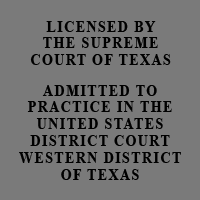Gadolinium Contrast Dye Lawsuits, Nephrogenic Systemic Fibrosis (NSF) Lawsuits, and Nephrogenic Fibrosing Dermopathy Lawsuits
Gadolinium is a rare earth metal that can be put into dyes and injected into the blood stream to enhance MRI and MRA images. Unfortunately, the use of Gadolinium dyes in people can cause nephrogenic systemic fibrosis (NSF) in patients with kidney problems. Nephrogenic Systemic Fibrosis is a debilitating and potentially fatal disease for which there is no known cure. Even though some pharmaceutical companies knew about the life-threatening side effects of Gadolinium as early as April 2006, they hid the potential problems caused by the use of Gadolinium in dyes. Though they sold more products, the continued use of dyes with Gadolinium has likely unnecessarily injured and killed many people.
If you or a loved one has been injected with a gadolinium dye or have recently been diagnosed with Nephrogenic system fibrosis, please feel free to e-mail Texas Gadolinium Dye Lawyer Jason Coomer with your name & contact information or use our online form for a free case evaluation.
Gadolinium Contrast Dyes and Enhancement of MRIs and MRAs
Gadolinium is a silvery-white, malleable and ductile rare-earth metal with a metallic luster. It has unique properties in that it crystallizes in hexagonal, close-packed alpha form at room temperature, but when heated to 1508 K or more, it transforms into its beta form, which has a body-centered cubic structure.
Gadolinium is the active ingredient in several different brands of contrast dyes used to enhance MRI and MRA images. In April of 2006, reports began to surface that certain patients that had been injected with gadolinium contrast dyes were developing nephrogenic systemic fibrosis (NSF), previously known as nephrogenic fibrosing dermopathy (NFD). NSF is a disease which causes a thickening of the skin, connective tissues, muscles and internal organs throughout the body. There is no known treatment for NSF, it becomes worse over time and can lead to death.
Gadolinium demonstrates a magnetocaloric effect whereby its temperature increases when it enters a magnetic field and decreases when it leaves the magnetic field. The effect is considerably stronger for the gadolinium alloy. These properties allow Gadolinium when injected into the bloodstream to enhance MRI and MRA images. As such, Gadolinium has been put into dyes and these contrast dyes have been used by scientists and medical professionals in testing of patients.
Gadolinium Contract Dye and Nephrogenic System Fibrosis Lawyers
When Gadolinium is injected into a person, it can cause nephrogenic systemic fibrosis (NSF) which is a debilitating and potentially fatal disease for which there is no known cure. Persons with kidney problems should avoid any dyes with Gadolinium and should be aware of this potential danger if they are having an MRI or MRA done.
Nephrogenic systemic fibrosis (NSF) or Nephrogenic fibrosing dermopathy is a rare and serious syndrome that involves fibrosis of skin, joints, eyes, and internal organs. Scientific research has recently discovered an association between nephrogenic system fibrosis with exposure to gadolinium in patients with severe kidney failure.
In NSF, patients develop large areas of hardened skin with fibrotic nodules and plaques. Flexion contractures with an accompanying limitation of range of motion can also occur. NSF resembles scleromyxedema at the histologic (microscopic) level; it shows a proliferation of dermal fibroblasts and dendritic cells, thickened collagen bundles, increased elastic fibers, and deposits of mucin.
People that have had MRIs and are having unexplained symptoms including skin hardening, fibrotic nodules, strange lesions, deep pain, joint pain, and inability to walk or use of their joints, should contact their doctors to determine if they have Nephrogenic systemic fibrosis (NSF), Nephrogenic fibrosing dermopathy, or renal insufficiency. If you have questions about a potential Nephrogenic Systemic Fibrosis law suit, feel free to contact Nephrogenic System Fibrosis Lawyer Jason Coomer with your name, questions, & contact information.
Nephrogenic System Fibrosis Information
Most patients with NSF have undergone hemodialysis for renal failure, some have never undergone dialysis and others have received only peritoneal dialysis. Many patients have taken immunosuppressive medications and have other diseases, such as hepatitis C. Four of the five FDA-approved gadolinium contrast agents have been principally implicated in potentially causing nephrogenic systemic fibrosis including Omniscan, Multihance, Magnevist, and OptiMARK.
People with Nephrogenic System Fibrosis describe symptoms including swelling and tightening of the skin, skin thickening, joint pain & problems with range of motion, muscle weakness, and severe deep pain. The health problems usually are limited to the extremities of the body, but also may include the torso. The condition may develop suddenly over a period of days to several weeks or more slowly. In many cases, the skin thickening inhibits the range of motion and extension of joints. Severely affected patients may be unable to walk, or fully extend the joints of their arms, hands, legs, and feet. Complaints of muscle weakness and severe pain are common.
In people with nephrogenic system fibrosis, their skin changes may start as reddened or darkened patches, papules, or plaques. In time, their skin may feel hard or wooden and their skin texture may resemble the peel of an orange. Patients may experience burning, itching, or severe sharp pains in areas of involvement. Radiography may reveal calcifications of the soft tissue. Deep "bone pain" has been described in the hips and in the ribs.
The skin lesions are commonly symmetrical, with zones between the ankles and thighs most commonly involved, followed by involvement between the wrist and upper arms. Hand and foot swelling with blister-like lesions have been reported. Some patients have reported yellow papules or plaques on or near their eyes. Rapid, new onset fluctuating hypertension of unknown cause has been described prior to the onset of the skin lesions.
Nephrogenic System Fibrosis History
The first cases of NSF were identified in 1997, but NSF was first described as an independent disease entity in 2000. While skin involvement is on the foreground, the process may involve any organ and resembles diffuse scleroderma or systemic sclerosis. In 2006, the link between NSF and gadolinium-containing contrast agents was made. As a result, gadolinium-containing contrast is now considered contraindicated in patients with an estimated glomerular filtration rate (a measure of renal function) under 60 and especially under 30.
The European Medicines Agency has classified the gadolinium-containing contrast agents in three groups:
-
Least likely (safest) to release free gadolinium ions Gd3+ in the body have a cyclical structure: Dotarem, Gadovist and ProHance
-
Intermediate have an ionic linear structure: Magnevist, MultiHance, Primovist and Vasovist
-
Most likely to release Gd3+ have a linear non-ionic structure: Omniscan and OptiMARK
It is believed that the pharmaceutical companies knew about the above listed life-threatening side effects of using Gadolinium Contrast Dyes to enhance MRI and MRA images, but hid this research to protect their profits.
Nephrogenic System Fibrosis Lawyers and NSF Lawsuits
Nephrogenic Systemic Fibrosis (NSF), also known as nephrogenic fibrosing dermopathy (NFD), is a condition that, so far, has occurred only in people with renal problems. Until recently it was not known what causes NSF and there were no cases identified prior to 1997.
It is believed that the pharmaceutical companies knew about the above listed life-threatening side effects of using Gadolinium Contrast Dyes to enhance MRI and MRA images, but hid this research to protect their profits. They also should have been aware of safer alternatives for Gadolinium Contrast Dyes.
Gadolinium Contrast Dye Lawyers and FDA Action
The U.S. Food and Drug Administration (FDA) has asked manufacturers of Gadolinium-Containing Contrast Agents to include a new boxed warning on the product labeling of all gadolinium-based contrast agents which are used to enhance the quality of magnetic resonance imaging (MRI).
This FDA Black Box Warning was updated in April 2007 to alert health care professional of the FDA’s request for new warnings about risk of nephrogenic systemic fibrosis (NSF) to the full prescribing information for all gadolinium-based contrast agents (GBCAs) (Magnevist, MultiHance, Omniscan, OptiMARK, ProHance). This new labeling highlights and describes the risk for NSF following exposure to a GBCA in patients with acute or chronic severe renal insufficiency (a glomerular filtration rate <30 mL/min/1.73m2) and patients with acute renal insufficiency of any severity due to the hepato-renal syndrome or in the peri-operative liver transplantation period. In these patients, avoid the use of a GBCA unless the diagnostic information is essential and not available with non-contrast enhanced magnetic resonance imaging. NSF may result in fatal or debilitating systemic fibrosis. Requested changes to GBCA product labeling are summarized below. This black box warning was ordered in May 2007 and applies to all gadolinium dyes.
FDA Boxed Warning
* Exposure to GBCAs increases the risk for NSF in patients with: o acute or chronic severe renal insufficiency (glomerular filtration rate <30 mL/min/1.73m2), or o acute renal insufficiency of any severity due to the hepato-renal syndrome or in the perioperative liver transplantation period.
* NSF is a debilitating and sometimes fatal disease affecting the skin, muscle, and internal organs.
* Avoid use of GBCAs unless the diagnostic information is essential and not available with non-contrast enhanced magnetic resonance imaging (MRI).
* Screen all patients for renal dysfunction by obtaining a history and/or laboratory tests.
* When administering a GBCA, do not exceed the dose recommended in product labeling. Allow sufficient time for elimination of the GBCA prior to any readministration.
Additional New Warnings:
* Among the factors that may increase the risk for NSF are repeated or higher than recommended doses of a GBCA.
* For patients receiving hemodialysis, healthcare professionals may consider prompt hemodialysis following GBCA administration in order to enhance the contrast agent's elimination. However, it is unknown if hemodialysis prevents NSF.
* Determine the renal function of patients by obtaining a medical history or conducting laboratory tests that measure renal function prior to using a GBCA.
* The risk, if any, for developing NSF among patients with mild to moderate renal insufficiency or normal renal function is unknown.
* Post-marketing reports have identified the development of NSF following single and multiple administrations of GBCAs. These reports have not always identified a specific agent. Where a specific agent was identified, the most commonly reported agent was Omniscan, followed by Magnevist and OptiMARK. NSF has also developed following the sequential administration of Omniscan and MultiHance and Omniscan and ProHance. The distribution of the number of reports for the individual GBCAs may relate to multiple factors, including more limited use of some GBCAs, under-reporting of NSF, characteristics of the agent and a lack of patients’ complete GBCA exposure history.
FDA Recommendations and Considerations for Healthcare Professionals:
* Become familiar with the patient populations who are at known risk for NSF. To date, NSF has only been identified in patients with: o acute or chronic severe renal insufficiency (glomerular filtration rate <30 mL/min/1.73m2); o acute renal dysfunction due to the hepato-renal syndrome or in the perioperative liver transplantation period.
* Avoid using a GBCA in patients with known risks for developing NSF unless the diagnostic information is essential and can not be obtained with non-contrast enhanced MRI or other diagnostic procedures.
* Prior to administering a GBCA, evaluate patients for renal dysfunction by assessing their renal function, either by obtaining a medical history or conducting laboratory tests that measure renal function.
* When administering a GBCA, do not exceed the recommended GBCA dose in product labeling and allow a sufficient period of time for elimination of the agent from the body prior to any GBCA readministration. The elimination characteristics of each GBCA are described in the product label for each GBCA.
* For patients receiving hemodialysis, consider prompt hemodialysis after administration of a GBCA. Published data indicate that hemodialysis enhances GBCA elimination. From the first to the third hemodialysis session, reported average GBCA clearance rates were 78%, 96%, and 99%, respectively.1 Whether hemodialysis prevents NSF is unknown.
* Report possible cases of NSF to the FDA through the FDA’s MedWatch program (see reporting information at the bottom of this page).
FDA Information for the patient:
Physicians who are considering a GBCA for use in a patient who is at risk for NSF should discuss the following with the patient:
* The possibility of developing NSF, a debilitating and potentially fatal disease that involves the skin, muscle and internal organs.
* The signs and symptoms of NSF, which include:
* For the skin—burning or itching, reddened or darkened patches; and/or skin swelling, hardening and/or tightening o For the eyes—yellow raised spots on the whites of the eyes o For the bones, joints and muscles—joint stiffness; limited range of motion in the arms, hands, legs, or feet; pain deep in the hip bone or ribs; and/or muscle weakness
* If the patient is receiving hemodialysis: Prompt hemodialysis immediately after administering a GBCA hastens its elimination. However, whether hemodialysis prevents or reduces the risk of NSF is unknown.
* After receiving a GBCA, those patients known to be at risk for NSF require clinical follow-up and long term monitoring for the disease.
FDA Background Information and Data
First identified in 1997, NSF has been reported only in patients with acute or chronic severe renal insufficiency (glomerular filtration rate <30 mL/min/1.73m2) or patients with renal dysfunction due to the hepato-renal syndrome or in the perioperative liver transplantation period. Patients with this condition develop fibrosis of the skin and connective tissues throughout their body. The skin thickening may inhibit flexion and extension of joints resulting in contractures. In addition, patients may develop widespread fibrosis of other organs. A skin biopsy is necessary to confirm the diagnosis. The condition may be debilitating or cause death. Its cause is unknown and there is no consistently successful treatment.
Five GBCAs (Magnevist, MultiHance, Omniscan, OptiMARK, and ProHance) are approved in the U.S. for magnetic resonance imaging (MRI). The GBCAs are sometimes used for MRA (magnetic resonance angiography) although none are FDA-approved for MRA. The administered dose of the contrast with magnetic resonance angiography (MRA) may be higher (up to three times) than the approved dose for MRI. NSF has been reported following administration of all five FDA approved gadolinium-based contrast agents (Magnevist, MultiHance, Omniscan, OptiMARK, and ProHance). However, some adverse event reports of NSF do not include complete information on patients’ GBCA exposure history. Also, reports indicate that some patients received more than one GBCA prior to a NSF diagnosis. The lack of complete information of GBCA exposure, exposure to multiple GBCAs, along with similarities among all these contrast agents, make it impossible at present to definitively determine whether the extent of risks for developing NSF are the same for all the GBCAs.
Other FDA Information
In June 2006, FDA first notified healthcare professionals and the public about the risk of NSF following exposure to GBCAs after receiving reports of 25 patients with NSF from the Danish Health Authority. FDA issued additional information to healthcare professionals and the public in December 2006.
FDA review of spontaneously submitted post-marketing reports, sponsor-supplied information and the published literature identifies the following:
* FDA has received reports of patients who developed NSF after exposure to Magnevist, MultiHance, Omniscan, OptiMARK, and ProHance, unspecified GBCA, and multiple GBCAs (following multiple GBCA enhanced MRI scans).
* Among the reports that included renal status information, all patients had acute or chronic severe renal insufficiency, renal dysfunction due to the hepato-renal syndrome or renal dysfunction in the perioperative liver transplantation period. The vast majority of patients were receiving hemodialysis.
* To date, there has not been a report of NSF in a patient with normal renal function or mild to moderate renal insufficiency following GBCA exposure.
* The reported time between receiving a GBCA and subsequent diagnosis of NSF diagnosis is highly variable. Reported times range between days to many months.
* FDA has received reports of patients who died from complications related to NSF.
FDA has requested the manufacturers of the GBCAs to revise the product labels as soon as possible to include a new boxed warning and new Warnings section that describes the risk of NSF.
Gadolinium Lawyers and Nephrogenic System Fibrosis Lawyers
If you or a person you love has been injected with a gadolinium dye for an MRI and have Nephrogenic System Fibrosis, please feel free to e-mail Texas Nephrogenic System Fibrosis Lawyer Jason Coomer with your name & contact information or use our online form for a free case evaluation.
Texas Gadolinium Attorney Jason Coomer
commonly works with other lawyers throughout the United
States on Gadolinium Lawsuits and Nephrogenic System
Fibrosis Lawsuits. He works with Houston Gadolinium
Lawyers, New York Nephrogenic System Fibrosis Lawyers,
Dallas NSF Lawyers, Boston Gadolinium Dye Lawyers, and Los
Angeles Contrast Dye Lawyers. By sharing information
and working together, his law firm and other firms
throughout the United States are able to provide better
representation for there clients.
Feel Free to Contact Us with any Questions
Associations




